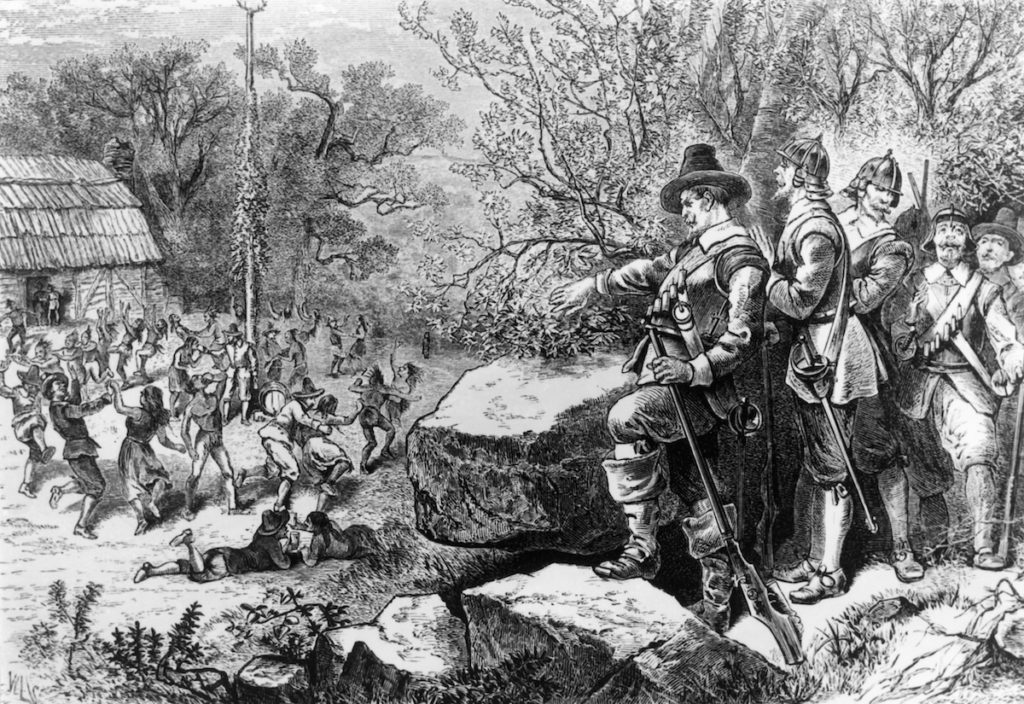![]()

Dates: May 1st
Practices: Bonfires, Handfasting, Maypole Ceremonies , Feasting
Herbs and Plants: Oak, Hawthorn, Wild Flowers
Colors: Green, White, Yellow
History
Beltane was the summer festival of the Celtic people in celebration of the returning fertility of the Earth. Many of the festivals and rituals revolved around blessing and protecting livestock or crops. The Aos sí were thought to be particularly active at this time and people would often leave offering for them. Extensive historical records have been found for the celebration of Beltane in both Ireland and Scotland.
Many traditions such as the May Queen, bonfires, and Maypoles are still practiced in Europe.
Beltane Rituals
Maypoles
A Maypole is a large wooden pole placed in the ground for people to dance around. Sometimes Maypoles will have ribbons attached to them that people will hold as they dance circularly around the pole.
The origins of Maypoles are debated though they are thought to be Germanic in origin. The first Maypole in the Americas was erected by Thomas Morton, founder of Merrymount. Puritans would later cut down it down and arrest Morton for supplying Native Americans with firearms.

Handfasting
Handfasting is a ritual that involves two joined hands being fastened together with a ribbon, string or rope. In modern Polytheism, handfasting is generally used in the context of marriage, engagement, or strong commitment to a romantic partner. Or in other words, tying the knot.
Handfasting appears to have been practiced by Germanic peoples and the Gaels. Handfastings fell out of favor over time among landowners due to inheritance issues. Handfastings would become non-legally binding in England in the 20th century, many flocked to Scotland in order to engage in this ancient tradition.
Planting and Foraging
Beltane is a good time of the year to think about planting. Whether you have a garden space or simply find a barren patch of land that could use some native wild flowers or a tree, this is an excellent offering to give to on Beltane. Always be aware of the ecological consequences of your actions. It is not enough that we simply venerate nature; we must cultivate practices that materially enrich it as well. See: Mystical Ecology.
It was also thought that anything foraged on Beltane would be especially potent in healing and magical properties.
Bonfires
Bonfires are a very common Beltane ritual. The smoke, ash, and charcoal from bonfires lit on Beltane are thought to have protective and blessing properties.
During Beltane, the Druids would light two bonfires and those who passed trough with their livestock would be blessed. Some would take fire from the bonfires and walk a perimeter around their fields or light torches inside their home. Those growing crops would spread the ash on or around their crops lands. Sometimes the ash would be applied directly on livestock, particularly cows, in order to protect their milk.
Aos sí and Ancestor Worship
Beltane was thought by the Celts to be another time of the year that the veils between the world of the spirits and the material world was particularly thin.
In Ireland, it was common practice to leave out a jug of water and food for ancestors to return to their homes and consume. For more on ancestor worship see: Sinnser Adora : An Introduction to Celtic Ancestor Worship.
In a practice known today as the Maybush, people would decorate Hawthorn, Rowan, and Gorse trees with ribbons and painted egg shells in what appears to be an offering to the Fae. Some would leave milk, first well water, grain and herbs to keep the Fae satiated. Others would seek to protect themselves and their livestock by using protective plants such as primrose.
While working with the Fae can be rewarding, one should do their research before engaging in this practice. There are very strict suggested practices for doing so. Brownies are an excellent place to get started.
Conclusion
“Mayday is the union of the two best things in the world, the love of nature, and the love of each other.” – Leigh Hunt
Beltane celebrates the start of summer and the coming abundance of nature. As Barbarians, we should attempt to strive towards the creation of abundance on this day and remember those who have built the abundance we now enjoy today.
The holiday of Mayday also takes place on the first of May which is a time not just of renewal in the natural world but in the world of the workplace and politics as well. For more information on Mayday see: A Chat About May Day (w/ Max, Franz, Liz and Amy!) by Srsly Wrong.
Suggested practices include:
– Maypoles
– Bonfires
– Feasting
– Working with Fae and ancestors.
– Maybushes
– Handfasting
– Planting
– Veneration of wells and springs
Toutā Caillte is entirely funded by our readers. Please consider donating via my Patreon to fund future writing and ecological projects. Thanks!